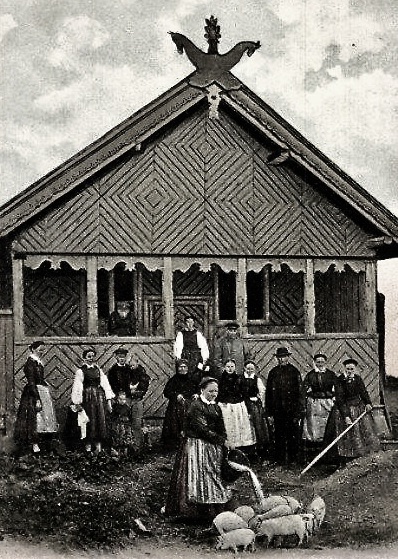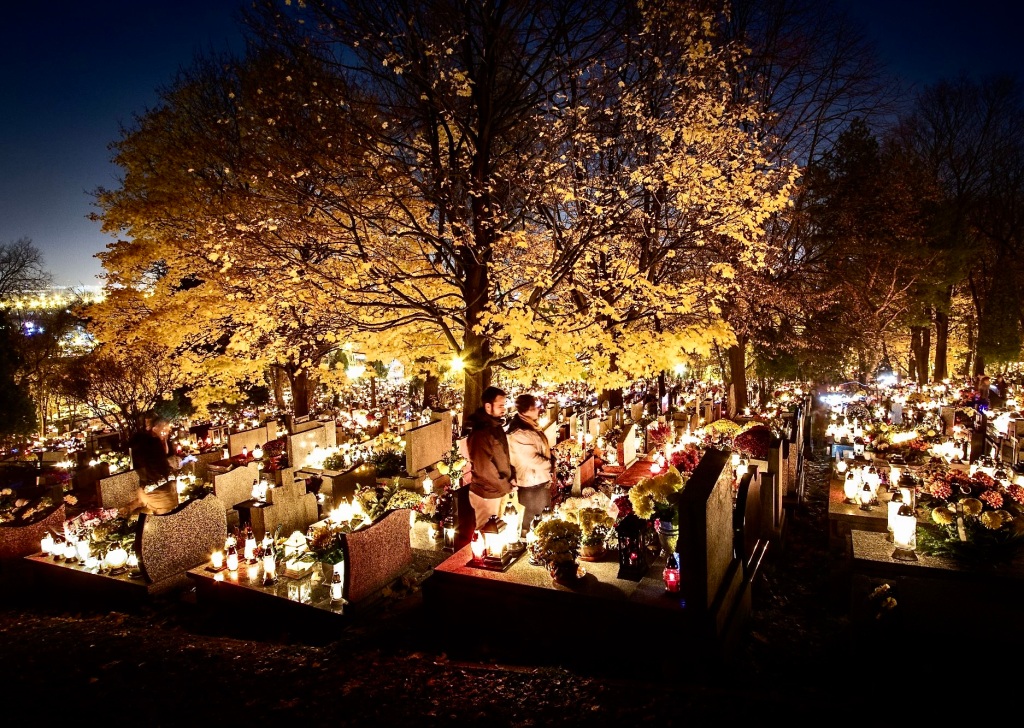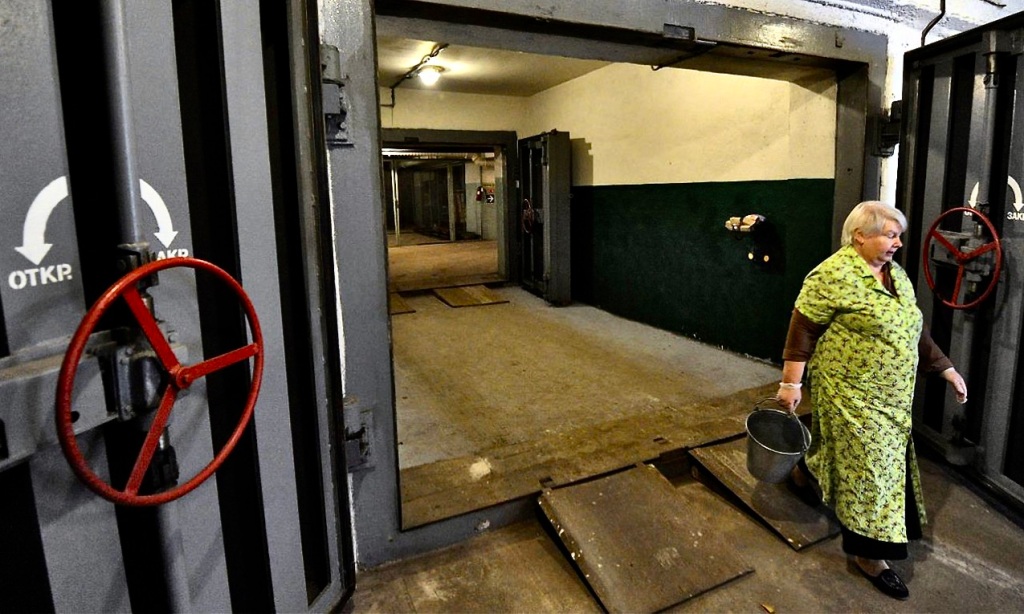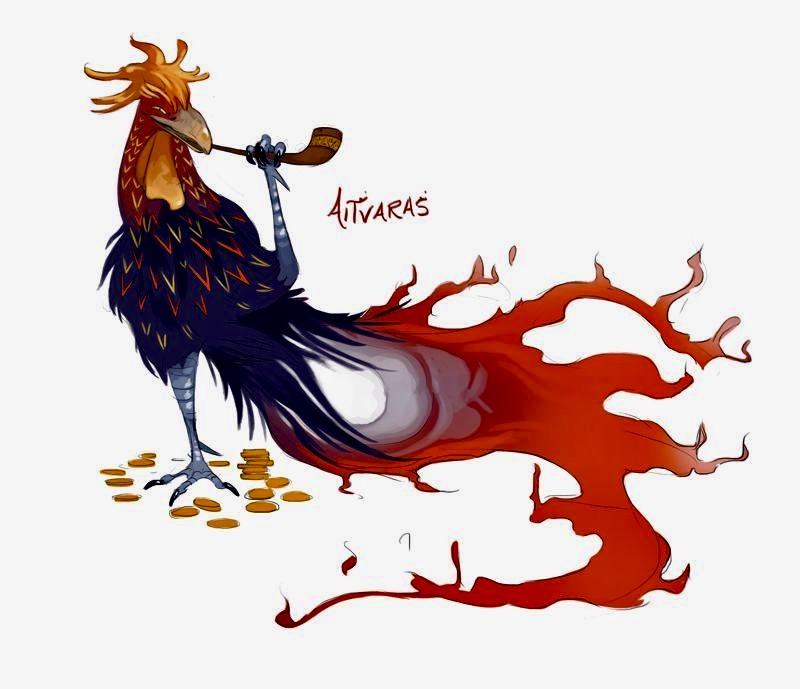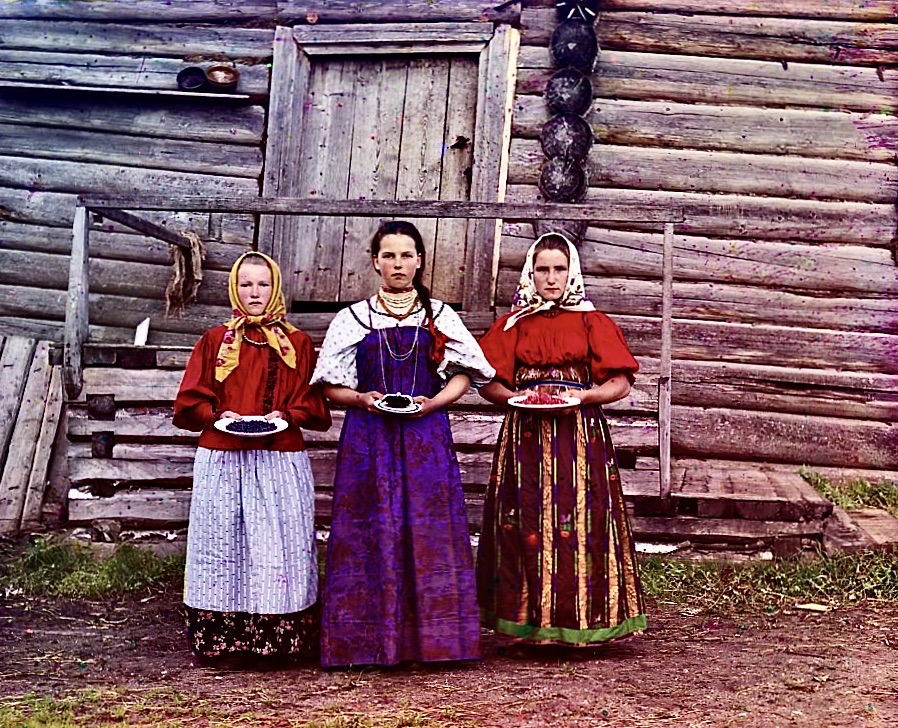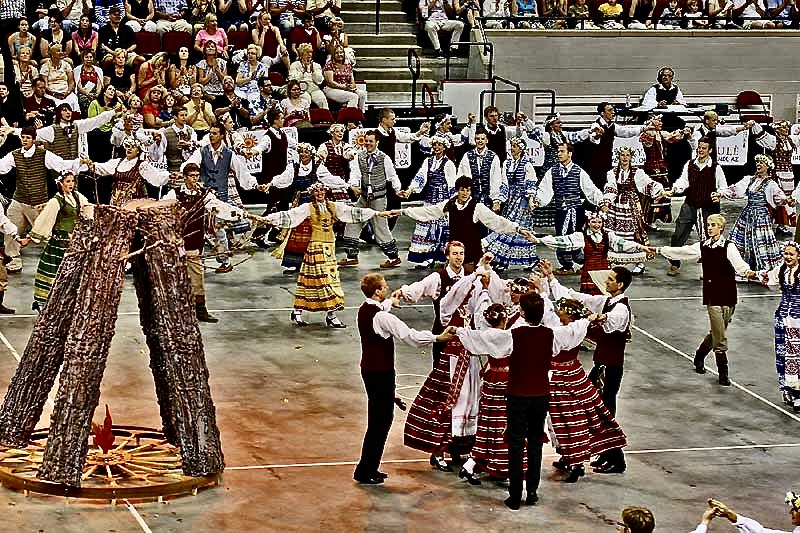
By Ed Staskus
I was three years and several months old before I got my first good look at Sudbury. I blinked rapidly and looked around. I didn’t know it had been a solitary railroad outpost in the late nineteenth century before rapidly growing after vast mineral resources were discovered. It was the end of summer on our street. When I took a last look before my nap I thought it was the best place in the world, a place where everything was new.
My brother had been born about two years after me, and had been crying at night lately, keeping us all awake. My father was a miner, working day shifts for two weeks and then night shifts for two weeks. He was one of the explosives men, setting black powder charges a mile down. He needed his nerves to be rock solid. He needed to sleep like a rock. He didn’t need any rattles in his brain.
At first, my mother thought it was a passing thing. When it didn’t pass, she took to sleeping in the living room, on the sofa, with my brother on the floor beside her in a wooden rocking cradle. Whenever he started crying, she reached down and rocked him, settling him down. She didn’t get much sleep, although my father and I got all the shuteye we needed.
One day, when my father was at work, and my mother had an appointment with the doctor to check my brother’s tonsils, my godfather Joe Dzenkaitis showed up to babysit me for the afternoon. He was on the night shift in the nickel mines and had time to kill. He showed up on a motorcycle. It was a 1948 Vincent Black Shadow. “I borrowed it from my neighbor,” he explained.
Most of the Lithuanian immigrants who landed in Sudbury, Canada in the late 1940s and early 1950s worked in the mines. They got out of the black hole that Europe was for them after the war and ended up in another black hole. Most of them were saving every penny they could so they wouldn’t have to work in the mines a minute more than they had to. Many of them owned their own homes, it being all-important, but didn’t own a car, a motorcycle, or even a bicycle.
The Vincent had a black tank and black frame. The chrome pipes were nickel chrome steel. The nickel came from Sudbury. The small city south of North Bay in Ontario sat on top of a big hole in the ground overflowing with ore. Some people called it the ‘Valley.’ Others called it the ‘Basin’. An asteroid smashed into the spot hundreds of millions of years earlier with a payload of vital metals. Nickel took the blue ribbon.
During the Korean War, which ended the year before, nickel was regulated. Whenever there was combat anywhere in the world Sudbury boomed. Nickel was vital for making armor plate. When the fighting stopped Sudbury went back to scuffling. It wasn’t boom or bust, but it was a one-basket economy, so it was boom or bust.
After World War Two the open pits were almost exhausted and new underground mines were being dug. Nickel was increasingly being used for civilian purposes. Technologically advanced smelters started seeing the light of day. While Sudbury slowly progressed from being the most polluted city in North America, cleaning itself up, I was just getting my legs under me. My friends and I played on the rock outcroppings behind our house all the time and never noticed the ever-present haze of ash and smoke. We played Man on the Moon. Real astronauts played the same game not far away on the dark side of the moon. Smelting on cordwood in open pits for decades had made the hinterland more lunar than not.
When I was born in 1951, I didn’t see much of my hometown at first. I was homesick for my old home, which had been warm and fluid. I saw a lot of my crib, the kitchen, and the living room. It was lively when my parents and their friends had kitchen parties at our house. I only spoke Lithuanian until the spring of 1954, when I started meeting kids my own age on the street. They all spoke English and French although none of them spoke French among themselves. English was the language on the street. French was for talking to parents and policemen.
The Vincent my godfather was riding was plenty fast enough, but it wasn’t the Black Lightning, which was the racing version of the Black Shadow. Every steel part on the Black Lightning that could be remade in aluminum had been remade in aluminum. Everything not essential was removed, reducing the weight by almost a hundred pounds. It had a single racing seat and rear footrests. In 1948 Rollie Free broke the motorcycle land speed record riding a Black Lightning on the Bonneville Salt Flats. He did it wearing a bathing suit, laying prone like a swimmer flat on his stomach, his legs dangling off the back end, hanging on to the handlebars for dear life. He took a slow look around when it was all over and exhaled.
I sat on the motorcycle behind my godfather, who I called Uncle Joe. I couldn’t get my arms around him and had to hang on to his shirt. He burped the bike down Stanley Street to Elm Street and took a left towards downtown. We lived on a new stretch of Stanley Street. Houses were being built as fast as could be because Sudbury was the most congested city in Canada. The Dominion Bureau of Statistics reported there were “42,410 people jammed into 9,450 units.” More than a third of the housing was officially designated as “overcrowded.”
We glided past the Regent Theatre where my parents went to see movies on weekends. My father learned to speak English in Lithuania, but my mother lived on an out-of-the-way family farm of pigs and sugar beets near the East Prussian border. English was an alien language to her. The movies were a way for her to learn the lingo. She had just seen “Creature from the Black Lagoon.” She learned how to call for help in one showing.
The picture palace was run by Herbert Sutherland. By the time I was old enough to go see movies it was home to a colony of rats. It got so it was hard to tell if somebody was screaming because of the monsters on the screen or because of a rat biting their ankle. Herb Sutherland found several homeless cats and invited them to make the theater their home. The city sent him a letter saying, “We do not feel the use of cats is sufficient to eliminate the menace.” He threw the hired guns out and set out poison, making the problem disappear.
We went past the new Sudbury Arena which had replaced the old Palace Rink the year I was born. Uncle Joe rode carefully, watching for mud, threading the needle. The Junction Creek overflowed its banks every year, flooding the northern and central parts of Sudbury. We rode around the General Hospital where I was born. Outside the Grotto of Our Lady of Lourdes we stopped for ice cream cones. I looked over my shoulder for spirits and saints.
Frederic Romanet du Caillaud, known as the Count of Sudbury, had a six-foot tall 1500-pound bronze statue of the Virgin Mary erected at the mouth of the grotto in 1907. “Queen of the Gauls” was inscribed on the statue. At first, an Italian family by the name of Drago took care of it, cleaning up grime and bird shit. In the 1950s the Rosary Club was formed and assigned Omer Naqult. a local barber and devout Catholic, to watch over the pilgrimage site.
One year earlier almost 10,000 people gathered at the site, coming from all the various parishes of the Sault-Ste-Marie diocese. New lighting was installed to light up the shrine at night. At the end of the next spring more than 10,000 residents of Sudbury took part in another Corpus Christi procession that ended at the grotto. My parents weren’t able to go to the parade, no matter how devoted to Catholicism they were, so I didn’t know anything about it at the time.
The statue was an inch or two shorter than Uncle Joe, who wore his hair wavy and was strong as an ox. He could bend nails with his hands. He and his wife Brone didn’t have any kids, but I saw plenty of them, anyway. My parents had one of the biggest living rooms among their Lithuanian immigrant friends and our house was where card playing, dancing, eating, and drinking happened on many weekends.
We set off for Ramsey Lake. Before there ever was a Sudbury the natives called the lake Bitimagamasing, which means “water that lies on the side of the hill.” Everybody agreed Ramsey was easier to pronounce and that is what everybody called it. Everybody also agreed the lake was dead. Sewage from Minnow Lake drained into Ramsey Lake. Open roast emissions had been going on for so long and led to so much pollution that the lake, which had few water flow outlets, had given up the ghost. Even though it was still the largest lake in the world located entirely within the boundaries of a single city, it was a shell of its former self.
There weren’t many fish in the lake. By the 1950s, despite three decades of persistent stocking, angling was still bad. Besides the pollution, fishermen had long since been dynamiting for fish, wiping out some species like bass. When Lands and Forest biologist R. E. Whitefield went census netting, it took him four full days to catch five northern pike and one yellow perch. Lake trout were unsuccessfully stocked in 1952 and that was the end of stocking for the next twenty-five years.
Before my father showed up to sweep her off her feet, my mother’s Canadian boyfriend often took her out on the lake in his speedboat, until the day he started showing off, racing and zig zagging, and she fell off the back of it without him noticing. An evil-looking pike watched her bob up to the surface. By the time her boyfriend looked for her she was floating on her back waiting for him, hoping the weight of her wet clothes wouldn’t drag her under.
The lake is named after William Ramsey, the chief of a survey party in the late 1800s who got into the weeds in heavy fog. After finding himself he named it Lost Lake. Others less lost decided it would be better to name it after him but misspelled his name, calling it Lake Ramsay. Forty years later somebody noticed the mistake and corrected the spelling.
When we got to the lake, I begged Uncle Joe to let me go swimming, but the water was greasy and purple as far out as we could see. “It’s probably some poisonous waste, or something Inco is up to,” he said. I had no idea what Inco was, but I had heard “What are you up to?” from my mother often enough that I knew it couldn’t be anything good. We went for a walk instead. When I got tired my godfather carried me on his shoulders, my fingers a stranglehold in his thick head of hair.
It was a late September day and trees were starting to change color. There weren’t many of them, but the yellows and reds got me going and I begged Uncle Joe to take me to a forest. He said there weren’t any, but finally relented when I wouldn’t leave it alone. We roared out of Sudbury on the Vincent and into the countryside.
It turned out my godfather was right. There were hardly any trees anywhere, at all. The first thing to happen to them was the Great Chicago Fire in the 1870s. Lumber camps popped up all over Ontario providing wood for the American city’s reconstruction. Then the ore discoveries and smelting got rolling, the fires releasing sulfur, which combined with water forms sulfuric acid leading to acid rain. Saplings struggling to reforest the landscape didn’t have a chance and died by the millions. The land around Sudbury looked like a wasteland.
Our street in the city had trees and grass and gardens but the only vegetation I saw outside of the city was wild blueberry patches and paper birch. What other trees there were, lonely and threadbare, were giving it their best shot against long odds. They were like the crippled kid on Pine Street we sometimes played with, although never for long. He couldn’t hop, skip, or jump. He couldn’t keep up with us as we ran here and there playing.
When my godfather checked his watch, he suddenly said we had to go. We raced back to Sudbury, to Stanley Street, to our house. My father wasn’t home from work, yet. Neither was my mother.
“When she asks you what we did today, just tell her we went sightseeing, OK?” Uncle Joe said.
“OK,” I said.
After my mother came home, I told her we had a great time, and while she and my godfather had coffee on the front porch, I watched my baby brother crawl around in the back yard. He was making progress, gurgling rather than crying. Our street dead-ended in a sheer face of dark pitted rock. I was forbidden to climb it because it was steep, even though I had already gone up and down it many times with some of my friends. Sometimes rules are a moot point.
When my friends ran into our front yard after dinner and asked me where I had been all day, I told them all about it, all the places I had been to, and how Sudbury was bigger, better, and more exciting than I had ever imagined. After that, Stanley Street was still our world, but we couldn’t wait to see more of the world. We ran up and down the street pretending to be riding motorcycles. The sunset was gleaming red and orange that evening. When my mother put me to bed that night, saying I looked tired, I slept like the rock of ages.
Ed Staskus posts monthly on 147 Stanley Street http://www.147stanleystreet.com, Made in Cleveland http://www.clevelandohiodaybook.com, Atlantic Canada http://www.redroadpei.com, and Lithuanian Journal http://www.lithuanianjournal.com.
“Cross Walk” by Ed Staskus
A Mid-Century Crime Thriller
“A once upon a crime whodunit.” Barron Cannon, Adventure Books
“Captures the vibe of 1950s NYC.” Sam Winchell, Beyond Fiction
Available on Amazon: https://www.amazon.com/dp/B0CRPSFPKP
Late summer and early autumn. New York City. A Hell’s Kitchen private eye. The 1956 World Series. President Eisenhower at the opening game. A killer in the Brooklyn Dodger dugout.


